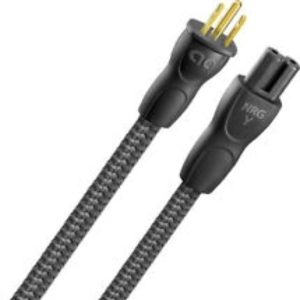Audioquest HDMI Pearl 18
279,95 $ – 549,95 $
Description
The Pearl HDMI cable features Solid Long-Grain Copper (LGC) Conductors. Special attention has been given to maximize HDMI performance, and indeed, AudioQuest’s HDMI cables elevate sonic performance to new heights.
4K/8K Resolution AudioQuest 18Gbps High-Speed HDMI cables provide the necessary bandwidth for video up to 8K/30 (8-bit, 4:2:0), equivalent to a resolution of 7680 x 4320 (over 33 million pixels) at up to 30 frames per second (fps). Frame rates of 24 and 30 fps are standard for most movies and many TV shows.
18Gbps Bandwidth All AudioQuest 18Gbps High-Speed HDMI cables are guaranteed to possess the 18Gbps bandwidth required for compelling features such as 8K/30 video, HDR (High Dynamic Range) imagery, and eARC (enhanced Audio Return Channel).
eARC Previous HDMI hardware’s ARC capabilities are limited to lossy (compressed) 5.1-channel surround sound. Not only do all generations of AudioQuest HDMI cables “with Ethernet” support ARC, but to ensure superior audio performance, the ARC-channel conductor-pair is internally controlled for direction, running in the opposite direction from the 4 pairs carrying information to the TV. New HDMI 2.1 hardware supports Enhanced Audio Return Channel (eARC), significantly increasing bandwidth to support uncompressed and lossless high-resolution multichannel audio, including Dolby TrueHD and Atmos, and DTS-HD Master Audio and DTS: X.
HDR AudioQuest 18Gbps High-Speed HDMI cables support High Dynamic Range (HDR) and Dynamic HDR. HDR content enhances image contrast for deeper blacks and brighter whites/highlights, along with increased color saturation and brightness. Dynamic HDR (HDR 10+ and Dolby Vision, for example) allows frame-by-frame HDR optimization instead of fixed HDR settings for the entire program.
Active HDMI AudioQuest Pearl, Forest, and Cinnamon HDMI cables utilize Active Frequency-Equalization to enable full 18Gbps/4K UltraHD performance from 10 to 15 meters.
HDMI Directionality All audio cables are directional. The correct direction is determined by listening to every batch of metal conductors used in every AudioQuest audio cable. All signal conductors are controlled for digital audio direction in AudioQuest HDMI cables, and care is taken to run the conductors used in the Audio Return Channel in the opposite direction to ensure the best performance for that application. Arrows are clearly marked on the connectors to guarantee superior sound quality.
Solid Long-Grain Copper (LGC) Conductors Solid Long-Grain Copper (LGC) allows for a smoother and clearer sound than cables using regular OFHC (Oxygen-Free High-Conductivity) copper. Solid conductors prevent strand interaction, a major source of distortion. Surface quality is crucial, as a conductor serves as a guide-rail for both the electric fields within a conductor and the magnetic fields outside the conductor. LGC has fewer oxides within the conducting material, fewer impurities, fewer grain boundaries, and definitively better performance.
Foamed-Polyethylene Insulation Any solid material adjacent to a conductor is part of an imperfect circuit. Wire insulation and circuit board materials absorb energy. Some of this energy is stored and then released as distortion. Because air absorbs almost no energy, and Polyethylene is low-loss with a benign distortion profile, Foamed-PE, with its high air content, causes much less of the out-of-focus effect common to other materials.
High-Speed Data Capacity HDMI standards and capabilities have significantly improved since DVI first evolved into HDMI. All generations are backward compatible. However, not all previous HDMI cables can transmit the full 18Gbps of data required to optimize today’s HDMI 2.0 equipment. While there is currently no 4K/60 4:4:4 software requiring the full 18Gbps capability of HDMI, some sources (UHD Blu-ray players) can be set to “up-sample,” requiring 18Gbps capability. Up-sampling often should be done in the TV rather than in a previous component — but that’s your decision. AudioQuest HDMI cables with “Exceeds 18 Gbps” on the box front are guaranteed to exceed the requirements for all possible HDMI data streams.




